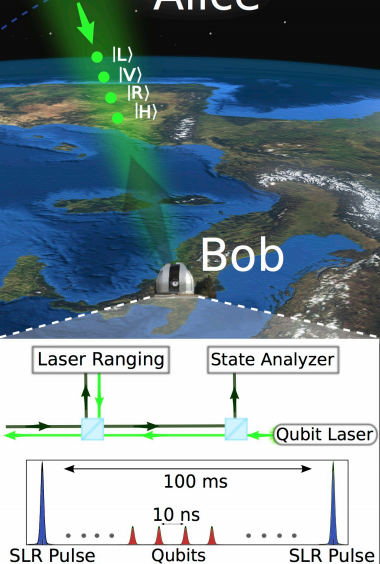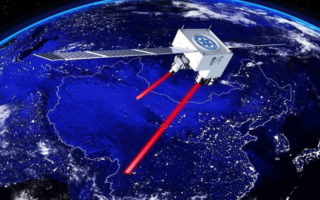Chinese satellite relays a quantum signal (laser between cities)
Do you want to manage Laser Industry between China and Africa?
Contact us here, mayado@sylodium.com for be our blogger managing the niche you choose: Tanzania – Shanghai, Nigeria – China, Africa – Guangdong laser Industry.
We are in Shipping business, Laser Industry, and Industry 4.0 between China and Africa, if you are a good thinker, visionary, studious, you can become our blogger in the niche you choose so we will win money together.
Why Shouldn’t Africa tp have an economic advantage of this Chinese coming Technology?
THiS NEW FROM WIRED.com
CHINESE SATELLITE RELAYS A QUANTUM SIGNAL BETWEEN CITIES.
ON A CLEAR night at the end of last year, a green dot appeared on the horizon near the Chinese-Myanmar border. “It was like a very bright green star,” says physicist Chao-Yang Lu. Lu, a professor at the University of Science and Technology of China, saw it from an observing station on the outskirts of the Chinese city of Lijiang.
He and his colleagues had to act fast. The green star was actually a laser, beamed from a satellite orbiting over 300 miles overhead, like a lighthouse beacon advertising the spacecraft’s location. The laser dot was streaking across the sky, and would disappear beyond the horizon in just 10 minutes. So the team, made up of researchers from multiple science institutions in China, locked their telescope onto the green laser in search of the real prize within: delicate, single infrared photons produced by a special crystal on the satellite. Filtering out the green light, they latched on to their quarry, a quantum signal the likes of which has never been sent.
This experiment was a crucial test for a budding technology called quantum cryptography, which uses quantum particles like photons to send secure information. But fragile quantum particles are notoriously difficult to transmit. If you try to send them through optical fiber, the signal gets corrupted after just 150 miles of travel—not super useful if you want to send information across a country or the world.
So researchers have long proposed using satellites to beam quantum particles over long distances. But they’d never done it till now. In this experiment, the satellite distributed single photons between two ground stations 750 miles apart, a new record. “For extending the distance of quantum communication networks, this is a milestone,” says Eleni Diamanti, the vice director of the Paris Center for Quantum Computing, who was not involved in the work. “There’s no question about it.”
China launched the $100 million satellite, known as Quantum Experiments at Space Scale, last August from the Jiuquan Satellite Launch Center in the Gobi Desert. Before the launch, researchers placed a complicated system of lasers, mirrors, and a special crystal on board. When a specific laser shone on the crystal, it would create pairs of light particles known as entangled photons. The crystal makes 6 million pairs of photons at a time, but on the ground, the two ground stations could only detect about one pair per second. “It’s a challenging task,” says Lu. “It’s like you have to clearly see a human hair from 300 meters away.”

Researchers like Lu and his colleagues think quantum cryptography could be the encryption tool of the future. Properly executed, the protocol goes like this: You first measure characteristics of photons to generate a key of 1’s and 0’s that you send to your intended recipient. Then, you encrypt your message with the key and send it. If a hacker tried to steal the key in transit, quantum mechanics theory says they’d instantly change it to a different set of numbers. Think of Schrodinger’s cat, which is both dead and alive when you’re not looking, but becomes purely one or the other when you pay attention. In the same way, the hacker would instantly change the state of the photons that make up the key, which means in theory, it’s physically impossible to hack. (In reality, the hardware isn’t perfect: Detectors are bad at counting single photons, which may make you think you’ve been hacked when you haven’t, and a hacker can trick your detector by shining bright light at it.)
This launch—and the actual experiment—was a long time coming. Jian-Wei Pan of the University of Science and Technology of China, the physicist who led the project, proposed the satellite experiment back in 2003. His team of some 100 people painstakingly designed, built, and tweaked the laser and satellite system over many years. They performed trial experiments on the ground first: delivering quantum keys only a few miles at first, and gradually ramping up the distance.
But they moved fast compared to the rest of the field, says physicist Thomas Jennewein of the University of Waterloo in Canada, who recently sent a quantum key from the ground to an airborne airplane. Years ago, Jennewein worked on several proposals to do similar experiments on the International Space Station. “None of those projects really went much beyond the study phase because of the complexity and the cost and everything,” he says. “But they just went ahead and did it. It’s great.”
The reason they could do it so quickly is that people at the highest level of the Chinese government prioritized the project, says Denis Simon of Duke Kunshan University, an expert on Chinese science policy. Because the high-ups wanted it, the group didn’t have to go through the usual bureaucratic funding steps, he says. The government is particularly interested in this technology because it wants quantum-secured communications in the national interest. “The Chinese government wants to communicate with their naval ships, with their South China Sea activities,” he says. “They want to do a lot of things with it.”
Meanwhile, researchers in other countries are attempting similar experiments—but with more red tape. Diamanti’s group is waiting to hear back from the European Space Agency on a proposal to distribute quantum particles from the International Space Station to several potential ground stations in Europe. Paul Kwiat, a physicist at the University of Illinois at Urbana-Champaign, is leading US efforts to do a similar experiment on the ISS with NASA.
But nobody else has plans as ambitious as China. Lu says his group is planning to perform the same experiment from a new satellite with a higher orbit, which would be able to send quantum keys between cities that are further apart. They want to exchange quantum keys between China and Austria, where some collaborators work. By 2030, Pan has said that China plans to launch a fleet of these satellites to create a global network. “We are very lucky and benefit from a fast decision-making system,” says Lu. There’s nothing like when political and scientific interests align.

